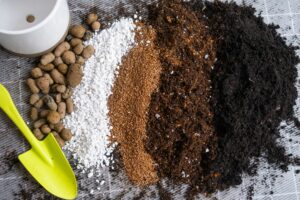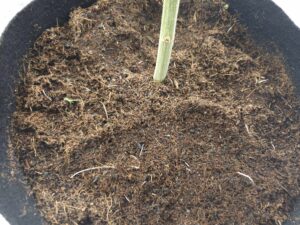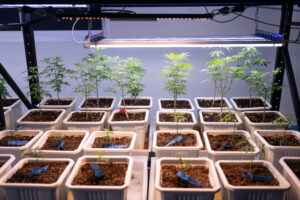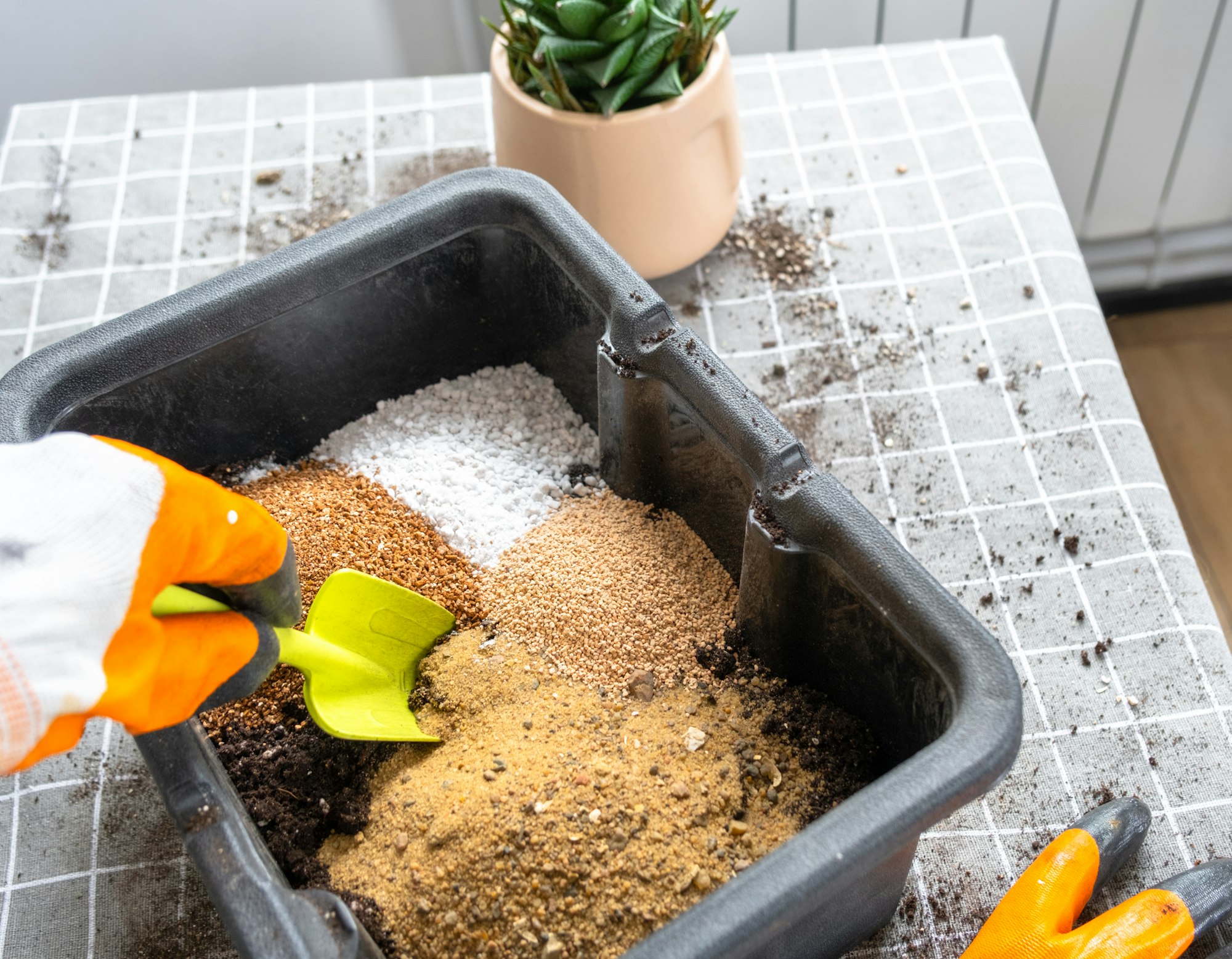
Choosing the right growing medium is a crucial element in cannabis cultivation. While traditional options like soil and coco coir are popular, exploring advanced mediums can offer unique benefits. This part of our blog series focuses on innovative growing mediums like peat moss, LECA, rice hulls, wool blend cubes, composted organic material, and sphagnum moss. Each offers distinct advantages, from moisture retention to environmental sustainability.
Our goal is to provide insights into these mediums, helping you make informed decisions that enhance plant health and yield while considering environmental impacts. Whether you’re looking to optimize your current setup or explore new, eco-friendly practices, these advanced mediums offer exciting possibilities for a rewarding cultivation experience.
Table of Contents
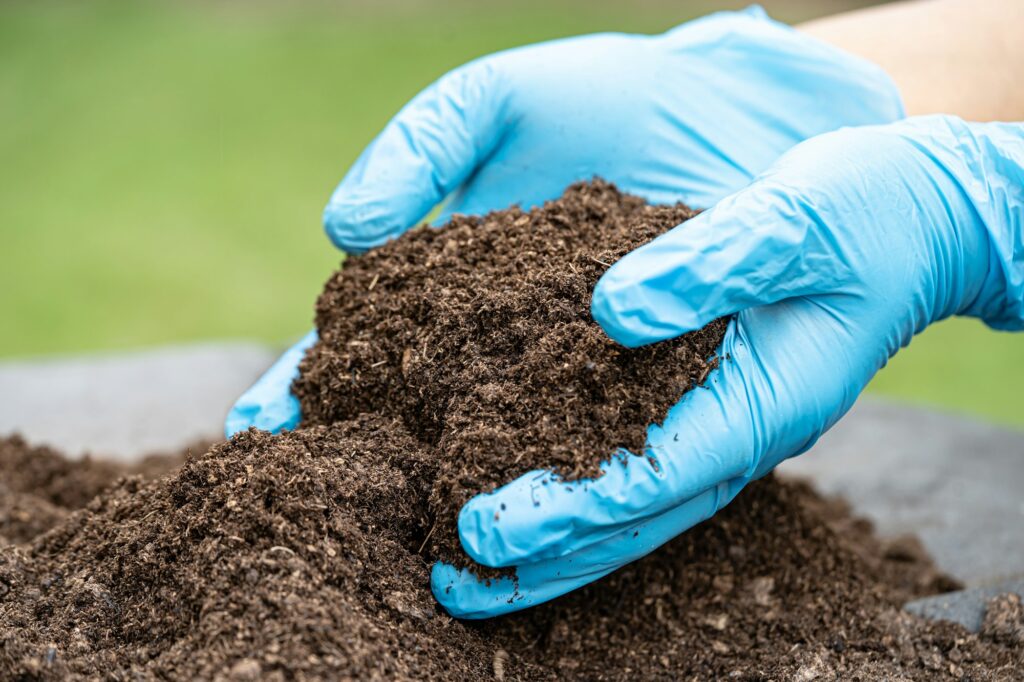
Peat Moss: The Classic Medium with Modern Implications
Peat moss stands as a hallmark in the world of horticulture and cannabis cultivation, prized for its moisture retention capabilities and ability to provide a stable, acidic environment conducive to plant growth. Originating from the slow decomposition of moss and other organic materials in peat bogs, this medium has a long history of enriching soil blends and serving as a key component in seed starting and cloning.
Moisture Mastery with Peat Moss
Peat moss can absorb water up to twenty times its dry weight, making it an exceptional medium for maintaining moisture levels within the growing environment. This property is particularly beneficial for cannabis, as consistent moisture is crucial for seed germination and young plant development. The ability to retain water also means less frequent watering, reducing labor and resource use.
Creating the Perfect Acidic Environment
Cannabis plants thrive in slightly acidic to neutral pH environments, typically between 6.0 and 7.0. Peat moss naturally creates an acidic medium, offering an ideal setting for cannabis roots to absorb necessary nutrients efficiently. This characteristic makes peat moss an invaluable component in creating custom soil mixes tailored to cannabis’s specific needs.
Considerations for Sustainable Use
- Sustainability Concerns: The extraction of peat moss from peat bogs raises environmental issues, as these ecosystems are critical for carbon sequestration and biodiversity. Responsible sourcing and consideration of alternative, more sustainable mediums are essential for environmentally conscious cultivators.
- pH Adjustment: While the acidic nature of peat moss can be beneficial, it may require adjustment with lime or other alkaline amendments to achieve the optimal pH range for cannabis cultivation.
- Nutrient Availability: Peat moss is inherently low in nutrients, necessitating the addition of compost, fertilizers, or other nutrient sources to support plant growth throughout the cultivation cycle.
Integrating Peat Moss into Cannabis Cultivation
Peat moss can be used alone or mixed with other amendments like perlite and vermiculite, creating a well-aerated, moisture-retentive medium ideal for root development and healthy plant growth. It’s especially useful in cloning and seed starting, offering a supportive environment for young plants.
When using peat moss, cultivators should consider its environmental impact and explore sustainable alternatives. As the cannabis industry evolves, the use of peat moss and similar mediums will be shaped by ongoing research and community experiences, balancing ecological concerns with cultivation success.
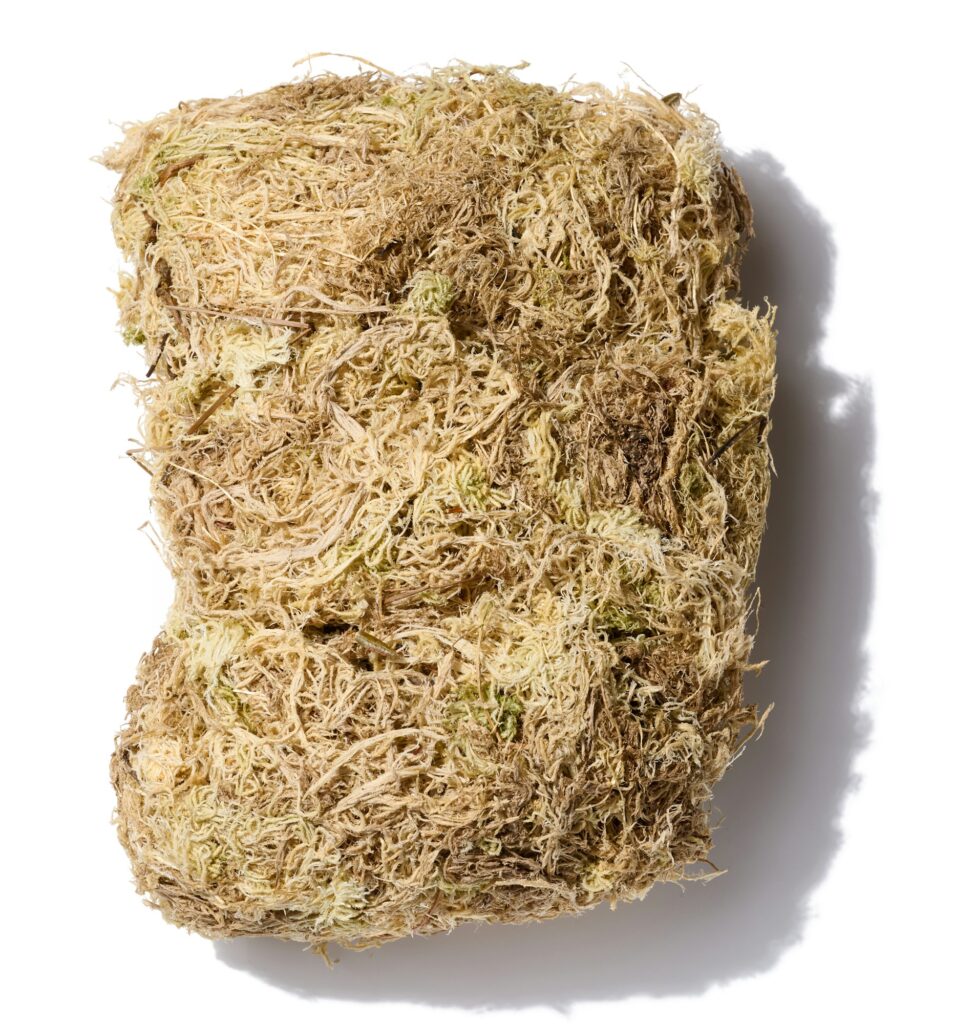
Sphagnum Moss: The Moisture Miracle for Cannabis Cultivation
Sphagnum moss, a natural, absorbent material harvested from peat bogs, stands as a unique option for cannabis growers, especially for those focused on cloning and moisture management. Unlike its partially decomposed counterpart, peat moss, sphagnum moss is harvested while still alive, retaining its superior water retention capabilities and providing a sterile environment for young plants.
Overview of Sphagnum Moss
Sphagnum moss grows in wetland areas and has a remarkable ability to hold up to 20 times its weight in water, making it an excellent medium for moisture control in cannabis cultivation. Its fibrous, airy structure not only ensures optimal moisture retention but also promotes aeration, which is crucial for healthy root development.
Benefits for Cannabis Cultivation
- High Water Retention: Sphagnum moss’s ability to retain large amounts of water makes it ideal for maintaining consistent moisture levels, particularly important for seedlings and clones.
- Aeration and Drainage: Despite its high moisture capacity, sphagnum moss also provides good aeration, preventing waterlogging and encouraging healthy root growth.
- pH Adjustment: Typically acidic, sphagnum moss can help lower the pH of the growing medium, benefiting cannabis plants that prefer slightly acidic conditions.
- Disease Suppression: Its natural antifungal properties can help suppress root diseases, offering an added layer of protection for young plants.
Considerations When Using Sphagnum Moss
- Sustainability Concerns: The harvesting of sphagnum moss raises environmental concerns, as peat bogs are important ecosystems for carbon storage and biodiversity. Responsible sourcing and minimal use are crucial to mitigate these impacts.
- pH Monitoring: Given its naturally acidic nature, it’s important to monitor and adjust the pH of the nutrient solution when using sphagnum moss to avoid excessively acidic conditions.
- Nutrient Provision: Like other inert media, sphagnum moss contains no nutrients, so it must be used in conjunction with a comprehensive nutrient solution to support plant growth.
Integrating Sphagnum Moss into Cannabis Cultivation
Sphagnum moss is versatile in cannabis cultivation, serving as a rooting medium for clones and a top layer in pots to help retain soil moisture. It’s particularly beneficial for propagation, providing consistent moisture and promoting healthy root development. However, its use should be balanced with environmental considerations to ensure sustainable practices.
The incorporation of sphagnum moss in cannabis cultivation highlights a trend toward specialized growing mediums that cater to specific needs while supporting sustainability. As the industry evolves, exploring such niche materials will offer growers diverse options to optimize their cultivation environments for health, yield, and eco-friendliness.
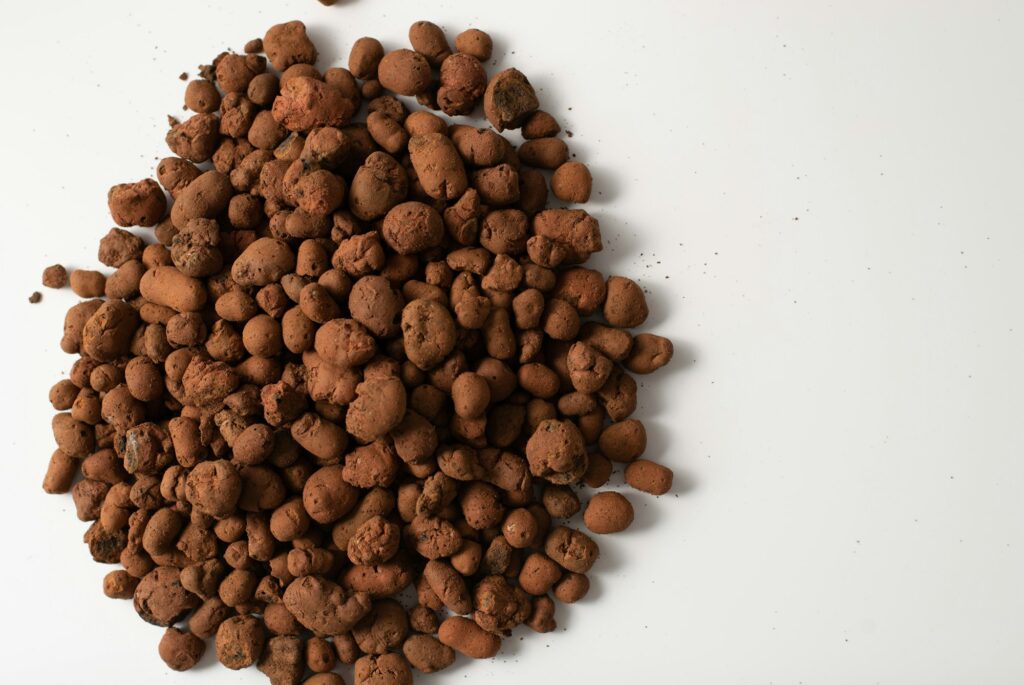
Expanded Clay Aggregate (ECA) or LECA: The Hydroponic Innovator for Cannabis Cultivation
Expanded Clay Aggregate, commonly known as ECA or LECA (Lightweight Expanded Clay Aggregate), stands out as a pivotal medium in the realm of cannabis cultivation, especially within hydroponic systems. These small, baked clay pellets offer a blend of versatility, sustainability, and effectiveness that caters well to the nuanced needs of cannabis plants, from seedling to harvest.
Overview of ECA/LECA
ECA/LECA is produced by heating clay to high temperatures in a rotary kiln, causing the material to expand into lightweight, porous balls. This process imbues the pellets with properties that are highly beneficial for cannabis cultivation, including excellent drainage and aeration capabilities. The unique structure of LECA ensures that it retains moisture while also providing sufficient air pockets, which promote root growth and oxygenation—a critical factor in the health and productivity of cannabis plants.
Benefits of Cannabis Cultivation
- Excellent Drainage and Aeration: The porous nature of LECA ensures that water is well-drained, reducing the risk of overwatering and root rot, while also providing ample oxygen to the roots.
- Reusable and Sustainable: LECA pellets can be cleaned and reused for multiple growing cycles, making them an environmentally friendly option compared to single-use substrates.
- pH Neutral: The inert nature of LECA means it has a neutral pH, which simplifies the management of nutrient solutions and reduces the need for frequent pH adjustments.
- Root Support: The stability and structure of LECA provide excellent support for root systems, encouraging healthy root development which is essential for nutrient uptake and plant growth.
Considerations When Using LECA
- Nutrient Solution Required: Since LECA is an inert medium, it does not contain any nutrients. As a result, a well-balanced hydroponic nutrient solution is essential to meet the plant’s nutritional needs.
- Initial Preparation: LECA usually requires pre-soaking before use to ensure that the pellets are fully saturated and ready to support plant growth.
- Monitoring and Maintenance: While LECA reduces some risks associated with overwatering, careful monitoring of moisture levels and nutrient concentrations is still necessary to maintain optimal growing conditions.
Integrating LECA into Cannabis Cultivation
Incorporating LECA into your cannabis cultivation can significantly enhance your growing experience, especially if you’re experimenting with hydroponic systems. LECA’s versatility allows it to be used in various setups, from primary mediums in Deep Water Culture (DWC) systems to hybrid systems that combine soil and hydroponics. Its ease of use, along with environmental benefits and its ability to support robust plant growth, makes LECA an attractive choice for cultivators aiming for efficiency and sustainability.
As the cannabis industry evolves, LECA represents a fusion of traditional cultivation knowledge and modern technology, supporting the growth of high-quality cannabis. This medium reflects the industry’s shift towards innovative and sustainable practices, offering growers a practical solution for achieving optimal plant health and yields.
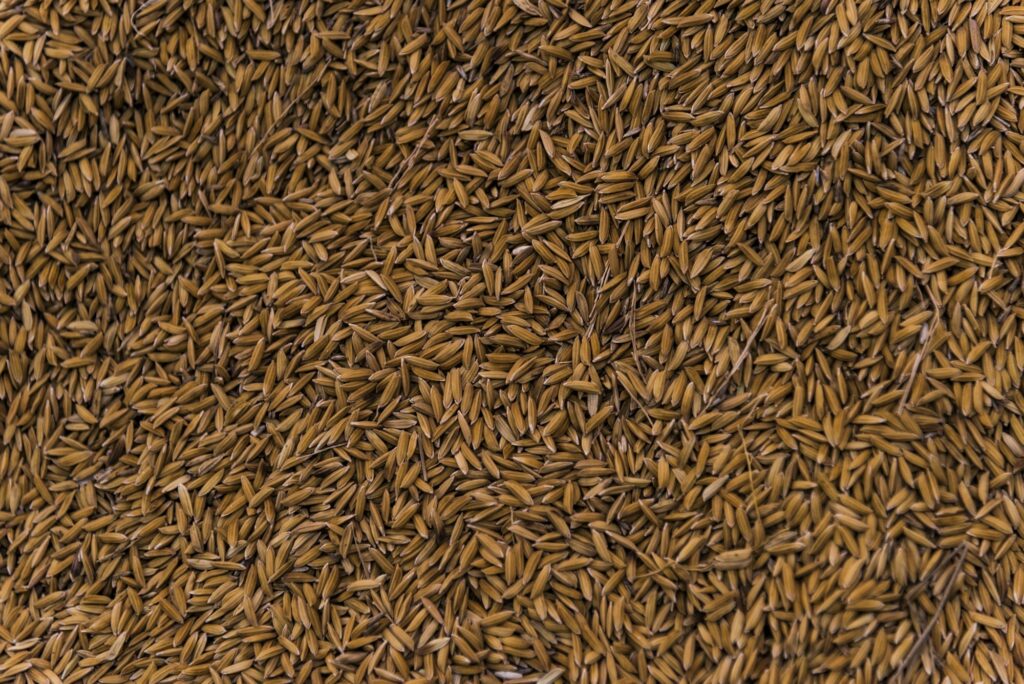
Rice Hulls: A Sustainable Addition to Cannabis Soil Mixes
Rice hulls, the protective coverings of rice grains, emerge as an eco-friendly and effective amendment for improving the texture and structure of soil in cannabis cultivation. Their organic nature and unique properties make rice hulls an excellent choice for cultivators looking to enhance drainage, and aeration, and even add a slight nutritional boost to their soil mixes.
Overview of Rice Hulls in Cannabis Cultivation
Rice hulls are byproducts of rice milling, traditionally considered waste. However, their incorporation into cannabis soil mixes has gained popularity due to their sustainability and beneficial attributes. Lightweight and porous, rice hulls can significantly improve the physical properties of the growing medium, promoting healthier root systems and more vigorous plant growth.
Benefits of Cannabis Cultivation
- Improved Drainage and Aeration: The addition of rice hulls to soil or soilless mixes prevents compaction, allowing better air flow to the roots and facilitating proper drainage, which is crucial for avoiding root diseases.
- Sustainability: As a byproduct of the rice industry, using rice hulls contributes to waste reduction and promotes a more sustainable approach to cannabis cultivation.
- Silica Content: Rice hulls naturally contain silica, a compound known to strengthen plant cell walls, enhance resistance to pests and diseases, and improve drought tolerance.
- Biodegradable: Unlike perlite or vermiculite, rice hulls are completely biodegradable, gradually breaking down to enrich the soil with organic matter.
Considerations When Using Rice Hulls
- Decomposition Rate: Over time, rice hulls will decompose, which can alter the structure of the growing medium. This may require periodic replenishment or adjustment of the soil mix to maintain optimal conditions.
- Nutrient Management: While rice hulls offer slight nutritional benefits, they are primarily used for improving soil structure rather than as a nutrient source. Additional fertilization may be necessary to meet the specific nutritional needs of cannabis plants.
Integrating Rice Hulls into Cannabis Cultivation
Incorporating rice hulls into your cannabis cultivation is an easy way to improve the physical properties of your growing medium. Mixing them into soil or coco coir helps adjust drainage and aeration levels. For seed starting or cloning, a higher proportion of rice hulls creates a lighter, more aerated environment that promotes root development. During the vegetative and flowering stages, a balanced mix supports strong growth by ensuring good root oxygenation and moisture control.
As the cannabis industry shifts towards more sustainable practices, using rice hulls exemplifies how eco-friendly choices can enhance cultivation efficiency. By integrating rice hulls into your soil management strategy, you can achieve healthier plants, higher yields, and contribute to a more sustainable future for cannabis cultivation.
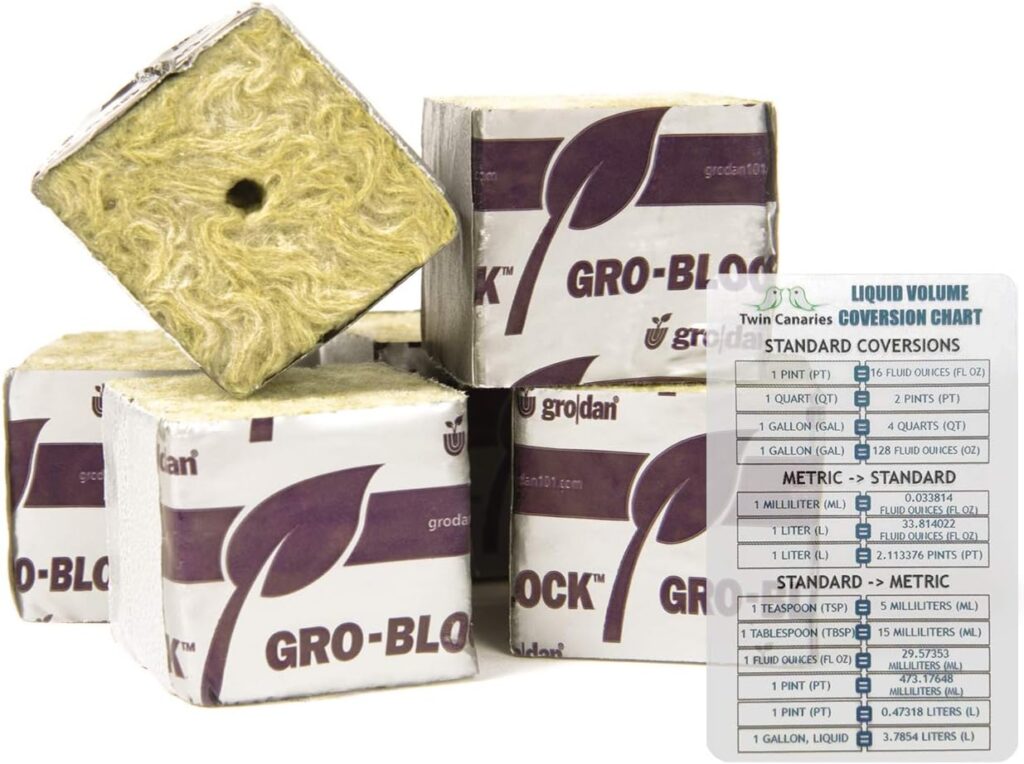
Rockwool Cubes: A Sustainable Alternative for Cannabis Seed Starting and Cloning
Wool blend cubes emerge as an innovative and sustainable medium in the cannabis cultivation scene, particularly appealing for seed starting and cloning phases. These cubes are crafted from a mixture of rockwool and other natural fibers, presenting an environmentally friendlier alternative to pure rockwool cubes without compromising on the benefits that make rockwool a popular choice among cultivators.
Overview of Wool Blend Cubes
Wool blend cubes combine the water retention and aeration advantages of rockwool with the sustainability of natural fibers, such as wood and coconut fibers. This hybrid approach not only addresses some environmental concerns associated with traditional rockwool but also maintains the structural and functional benefits essential for the early stages of cannabis plant development.
Benefits for Cannabis Cultivation
- Improved Sustainability: By incorporating natural, often renewable fibers, wool blend cubes reduce the environmental footprint associated with rockwool, offering a more sustainable option for environmentally conscious growers.
- Excellent Water Retention and Aeration: These cubes retain moisture effectively while ensuring adequate air flow to the roots, fostering a balanced environment for seed germination and root development.
- Sterility and Root Support: Like rockwool, wool blend cubes are produced in a way that ensures they are free from pathogens, providing a clean start for seeds or clones. The fibrous structure also supports delicate root systems, encouraging healthy initial growth.
- Versatility in Use: Suitable for use in both hydroponic and soil-based setups, these cubes offer flexibility for growers experimenting with different cultivation methods.
Considerations When Using Wool Blend Cubes
- pH Adjustment: Depending on the composition, wool blend cubes may require pre-soaking or pH adjustment to ensure they are within the optimal range for cannabis cultivation.
- Environmental Impact: While more sustainable than pure rockwool, the environmental benefits of wool blend cubes depend on the specific materials and manufacturing processes used. It’s important to source cubes from reputable producers who prioritize sustainability.
- Handling and Disposal: Growers should be mindful of the cubes’ disposal methods to minimize environmental impact. Although more sustainable, these cubes still necessitate responsible handling at the end of their lifecycle.
Integrating Wool Blend Cubes into Cannabis Cultivation
For cultivators looking to optimize the germination and cloning stages of their cannabis plants, wool blend cubes present an appealing medium that marries sustainability with functionality. They offer an excellent starting point for seeds or clones, providing the necessary moisture and aeration for robust early growth. Transitioning from wool blend cubes to larger containers or different growing mediums is seamless, allowing for a smooth progression as plants mature.
Wool blend cubes exemplify the ongoing innovation in cannabis cultivation mediums, offering growers an alternative that aligns with both cultivation efficiency and environmental stewardship. As the cannabis industry continues to evolve, such sustainable practices and materials will play a crucial role in shaping its future, guiding us towards more responsible and ecologically mindful cultivation methodologies.
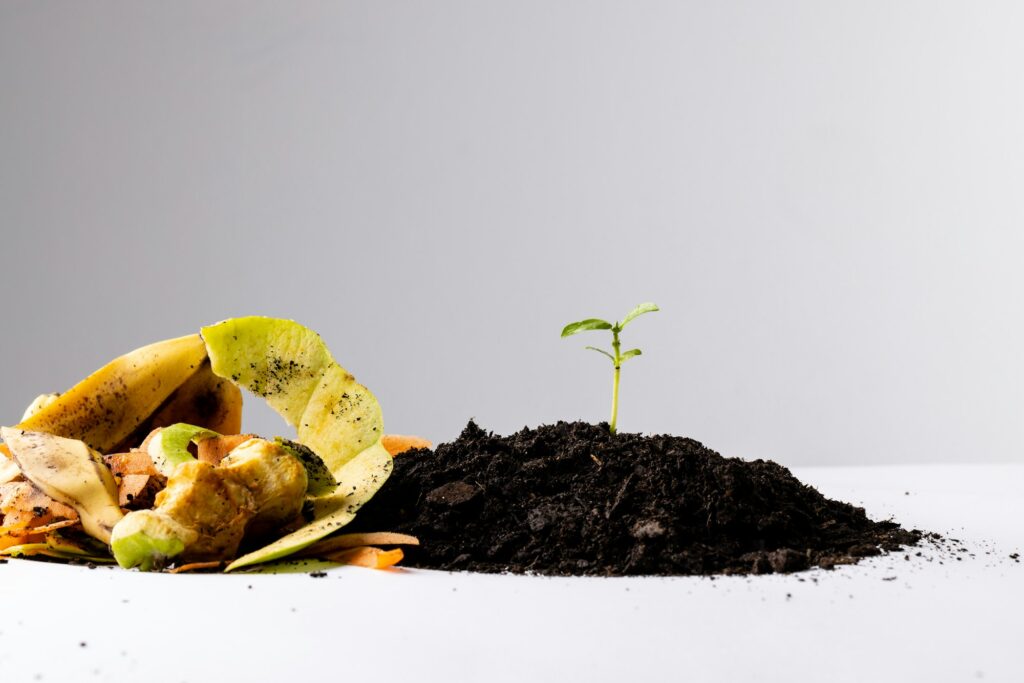
Composted Organic Material: Enriching Cannabis Soil with Sustainability in Mind
Composted organic material stands as a cornerstone of sustainable cannabis cultivation, offering a nutrient-rich, environmentally friendly alternative to synthetic fertilizers. This natural amendment is derived from the decomposition of organic matter, such as yard waste, kitchen scraps, and agricultural by-products, transforming waste into a valuable resource for cannabis growers.
Overview of Composted Organic Material
The process of composting involves the aerobic decomposition of organic materials by microorganisms, which break down the material into a nutrient-rich, soil-like substance known as compost. This natural process not only recycles organic waste but also produces a high-quality soil amendment that enhances soil structure, moisture retention, and microbial life, thereby supporting healthier cannabis plant growth.
Benefits for Cannabis Cultivation
- Nutrient-Rich: Compost provides a slow-release source of essential nutrients, including nitrogen, phosphorus, and potassium, along with a host of micronutrients vital for plant health.
- Improves Soil Structure: Adding compost to soil improves its structure, enhancing aeration, drainage, and water retention, which are critical for root development and plant health.
- Supports Microbial Life: Compost introduces beneficial microbes that aid in nutrient cycling, root development, and disease suppression, fostering a robust growing environment for cannabis.
- Environmentally Friendly: Utilizing composted organic material promotes waste recycling and reduces reliance on chemical fertilizers, aligning cannabis cultivation with sustainable practices.
Considerations When Using Composted Organic Material
- Quality and Composition: The nutrient content and pH of compost can vary depending on the materials used and the composting process. It’s important to ensure that the compost is well-decomposed and free from harmful pathogens or weed seeds before use.
- Application Rates: While compost is beneficial, over-application can lead to nutrient imbalances or excessive soil moisture. Understanding the specific needs of your cannabis plants and soil conditions is crucial for optimal compost use.
- Integration with Other Growing Mediums: Compost can be used in conjunction with other organic or inert growing mediums to customize the growing environment. Its versatility allows for tailored nutrient management and soil conditioning strategies.
Integrating Composted Organic Material into Cannabis Cultivation
Incorporating composted organic material into cannabis cultivation practices offers a sustainable pathway to enhanced plant health and yield. Whether used as a top dressing, mixed into soil or potting mixes or as part of a living soil system, compost enriches the growing medium with a complex array of nutrients and beneficial microbes. Its use underscores a commitment to environmentally responsible cultivation methods, reducing waste and chemical inputs while promoting vigorous, healthy cannabis plants.
As the cannabis industry continues to grow, the adoption of sustainable practices like the use of composted organic material not only benefits the environment but also supports the production of high-quality, organic cannabis. The transition towards more natural cultivation methods reflects a broader movement within the industry towards sustainability, showcasing compost as a key element in the future of cannabis cultivation.
Summary
In our exploration of advanced growing mediums for cannabis cultivation, we’ve delved into the unique properties, benefits, and considerations of six distinctive options: Peat Moss, Expanded Clay Aggregate (ECA) or LECA, Rice Hulls, Wool Blend Cubes, Composted Organic Material, and Sphagnum Moss. Each medium offers a set of advantages tailored to specific cultivation goals, emphasizing sustainability, efficiency, and the optimization of plant health and yield.
Peat Moss and Sphagnum Moss provide excellent moisture retention capabilities, making them suitable for moisture-sensitive phases of cultivation, such as seed starting and cloning. However, their use raises sustainability concerns, prompting a search for more eco-friendly alternatives.
Expanded Clay Aggregate (ECA) or LECA emerges as a champion for hydroponic cultivation, offering unparalleled drainage and aeration, which promotes robust root development. Its reusability and pH-neutral nature make it an attractive choice for those seeking efficient and sustainable hydroponic solutions.
Rice Hulls contribute to soil texture improvement and aeration, showcasing their value as a sustainable amendment that enhances drainage while also introducing silica to strengthen plant cell walls.
Wool Blend Cubes represent innovation in seed starting and cloning mediums, combining the water retention and aeration benefits of rockwool with the sustainability of natural fibers. This blend addresses environmental concerns while supporting healthy early plant growth.
Composted Organic Material stands out for its role in enriching soil with nutrients and beneficial microorganisms. It exemplifies a shift towards organic, sustainable cultivation practices that leverage waste materials to foster plant health and soil vitality.
Future Directions in Cannabis Cultivation
Exploring various cannabis growing mediums is key to optimizing your cultivation process. Whether you’re experimenting with advanced systems like aeroponics or deep water culture, or sticking to tried-and-true methods like organic soil mixes, understanding the unique advantages and challenges of each medium can significantly impact your grow’s success. Each medium offers different benefits in terms of nutrient delivery, water retention, and root aeration, allowing you to tailor your setup to the specific needs of your cannabis plants.
To complement your knowledge and refine your cultivation techniques, delve into our comprehensive guide on Mastering Organic Cannabis Cultivation. This article explores the principles and practices of organic growing, highlighting the benefits of using natural inputs and sustainable methods to produce high-quality cannabis.
Additional Resources:
- Grow That Sh!t Better by Maximus Reigns – An essential eBook for both novice and experienced growers, offering advanced techniques and tips for improving cannabis cultivation.
- Cannabis Growers’ Handbook by Ed Rosenthal – A comprehensive guide that covers all aspects of growing cannabis, from setup to harvest.
- Royal Queen Seeds Blog – A rich resource for growers, featuring articles on growing techniques, strain information, and more.
- Need Cannabis Seeds? – Seedsman Seeds has a variety of seeds for all growers from new and seasoned to medical and CBD users.
- Grow Weed Easy – A website dedicated to providing step-by-step guides and resources for growing cannabis at home.
These resources will guide you through the nuances of different growing mediums and the benefits of organic cultivation. By integrating these practices, you can enhance the quality and sustainability of your cannabis garden, ensuring a bountiful and environmentally friendly harvest. Happy growing!
